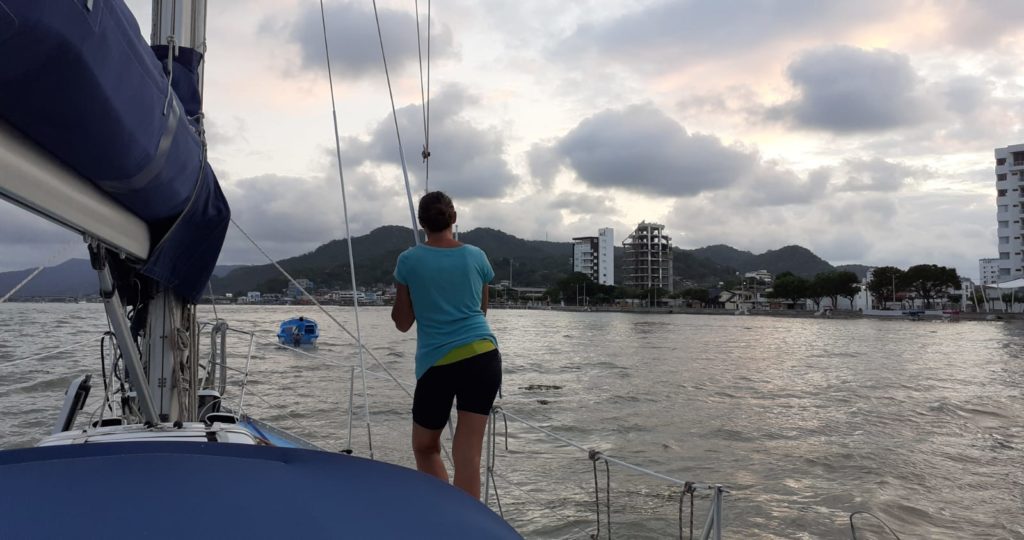When you learn to sail with the RYA, there comes a point in the theory where you learn about the Intertropical Convergence Zones. These are found at the Equator and, studying in far off Germany, they feel about as relevant as treatment for polar bear bites.
But then one day you sail south and, sooner or later, they become very real. For us that moment arrived as we waited to leave Panama heading for Ecuador.

The ITCZ is also known as the Doldrums. It is the area where the northern weather meets the southern weather and, as they don’t mix, are characterised by calm or squalls, rain and cloud. They spread from West to East across the oceans apparently baring the way to sailing vessels. “The Book” suggests that you just take lots of diesel and when you find yourself becalmed turn south and turn the engine on. Friends did just that last week and motored for thirty six hours non-stop.
 “The Book” is Cornells Ocean Atlas and the accompanying World Cruising Routes, both by Jimmy Cornell. They have diagrams explaining the average weather in each month and descriptions of the best time and tactics to sail the various routes.
“The Book” is Cornells Ocean Atlas and the accompanying World Cruising Routes, both by Jimmy Cornell. They have diagrams explaining the average weather in each month and descriptions of the best time and tactics to sail the various routes.But we are sailors and we barely carry enough fuel for thirty six hours of motoring. We had a different plan. We waited for a strong period of north wind and let that carry us as far south as it would. In February (on average) there is a “gap” that opens off the coast of Columbia and Ecuador which we aimed to squeeze through.

And it almost worked. We averaged over five knots for three days before eventually running out of wind while still two and a half degrees north of the Equator. Luckily we have a Parasailor so we flew that and it kept us moving (barely) for another fifty miles. Just before dawn we hit the promised deluge. No wind, choppy seas and buckets of water. Perfect conditions to go up on the foredeck and strike the Parasailor.
We bobbed around with just the jib up and drifted back North. Eventually we felt the hint of a wind and managed to turn the sluggish boat and move at about one knot heading south east. Sometimes we nearly managed two knots hand steering through the gloom in the downpour.
After a few hours we picked up the winds of the South Pacific and the rain stopped. As we sailed south the wind speed increased and with full sails we headed for Ecuador. It looked like we had found the secret doorway to the South.

While friends further out in the ocean battled a southerly gale we enjoyed sailing hard on a south westerly wind which took us straight to Ecuador – unfortunately a little too far north so we could practice our tacking.
We finally reached the entrance to the river at midday on the sixth day. We crossed the equator the previous night so were now showing degrees south on the GPS. We had to wait until one hour before high tide to follow a harbour pilot across the bar and even with him leading it was interesting as we surfed big swell towards the town wall.

And then, after six and a half days, we sat in the cockpit and looked at the Ecuadorian town of Bahia de Caraquez around us.


Wow! Well done, I’m learning a lot about sailing terminology from your journey.
When it rains where you were, is it cold too?
It is never cold here. We are almost exactly on the Equator